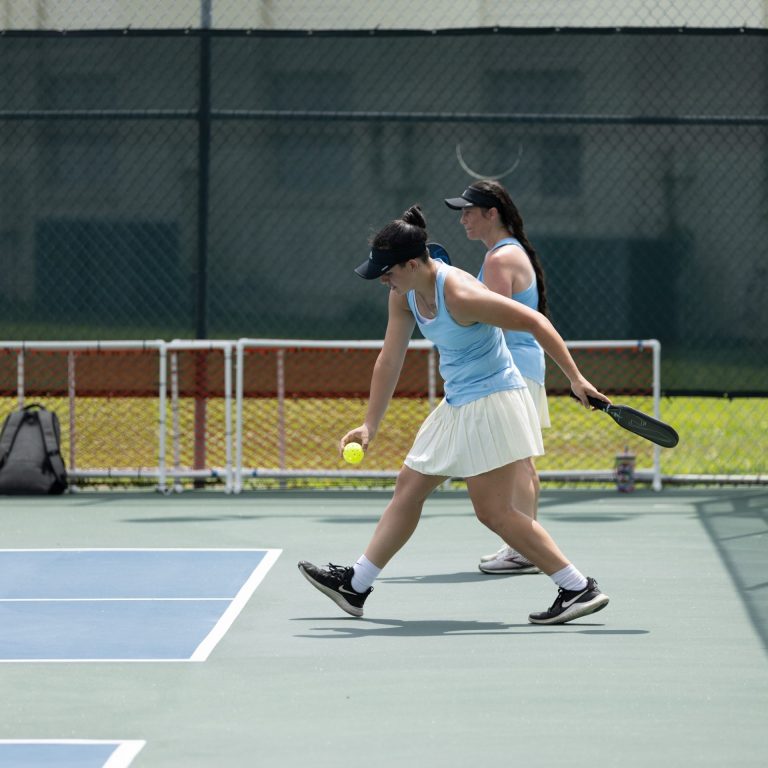Poaching in Pickleball
Poaching in Pickleball: Mastering Aggressive Play
Poaching in pickleball is a strategic move that can significantly enhance your game. This technique involves stepping into your partner’s territory to intercept a shot, putting pressure on your opponents and creating opportunities to win points.
The Advantages of Poaching in Pickleball
Poaching offers several benefits that can give your team an edge:
- Offensive Advantage: A well-timed poach disrupts your opponent’s strategy, forcing them to react defensively.
- Put Away Weak Returns: Intercepting weak returns with a poach allows you to take control at the net and finish points quickly.
- Exploit Openings: Poaching capitalizes on gaps in your opponent’s coverage, attacking open net areas effectively.
- Change of Pace: Mixing poaches with baseline play keeps opponents guessing and disrupts their rhythm.
- Psychological Pressure: The constant threat of a poach can lead to unforced errors by making opponents cautious with their shots.
Keys to Successful Poaching
To master poaching, focus on these key elements:
- Communication: Discuss strategies with your partner and use nonverbal cues during play.
- Footwork: Quick and precise footwork is essential to reach the net in time.
- Shot Selection: Poach only when confident you can execute the shot effectively.
- Partner Positioning: Consider your partner’s strengths and weaknesses when deciding to poach.
- Opponent Play: Adapt your poaching strategy based on your opponents’ tendencies.
Types of Poaching in Pickleball
Poaching by Shot Type
- Forehand Poach Against a Backhand Drop Shot: Intercepting a backhand drop shot with a forehand poach can catch opponents off guard.
- Backhand Poach at the Net: Volley poaching with a backhand can be highly effective at the net.
- Poaching a Deep Serve in Mixed Doubles: A deep serve can be poached to put pressure on the receiving team.
- Poaching a Third Shot Drop in Doubles: Disrupt the opponents’ strategy by poaching their third shot drop.
Based on Partner Positioning
- When Your Partner is at the Baseline: Poach to cover the net while your partner stays back.
- Poaching a Weak Return Aimed at Your Partner’s Forehand: Intercepting weak returns directed at your partner’s forehand can save points.
- If Your Partner is Struggling with Lobs: Poach to cover lobs and support your partner.
- Communicating a Poach at the Net: Clear communication is crucial to execute a successful poach.
Poaching Based on Opponent Play
- Poaching a Strong Forehand Drive: Intercepting a powerful forehand drive can neutralize an aggressive opponent.
- When to Poach Against a Team that Likes to Lob: Adapt your strategy to counter teams that frequently use lobs.
- Countering a Team that Poaches Aggressively: Adjust your play to handle opponents who poach often.
- Poaching Strategy Against a One-Handed Backhand: Target the opponent’s one-handed backhand for a higher chance of success.
Drawbacks of Poaching in Pickleball
While poaching is effective, it has its downsides:
- Miscommunication and Confusion: Poorly timed poaches can confuse your partner and lead to errors.
- Leaving Gaps in Baseline Coverage: Aggressive poaching can expose your baseline to opponent attacks.
- Risk of Injury: Quick movements required for poaching can lead to slips and falls.
- Over-reliance on Poaching: Relying too much on poaching makes your game predictable.
- Disrupts Flow of Play: Frequent poaching can break the natural rhythm of the game.
Improving Your Poaching Technique
Enhance your poaching skills with these tips:
- Refine Your Technique: Practice drills focused on footwork and reaction time.
- Communicate Clearly: Use hand signals or verbal cues to coordinate poaches with your partner.
- Read the Opponents: Anticipate shots by watching opponents’ body language and shot selection.
- Commit Fully to the Shot: If you decide to poach, be sure to fully commit. Avoid half-hearted attempts by reaching too far or attacking the ball late. Attack it with confidence and make it count.
Adapting Your Poaching Strategy
To keep your poaching unpredictable and effective, consider these strategies:
- Vary Your Poaching Frequency: Avoid becoming predictable with your poaches.
- Adjust Based on Opponents: Poach less against skilled players who can exploit gaps.
- Consider Your Partner’s Strengths: Poach more if your partner struggles with volleys.
Q&A on Poaching in Pickleball
What is poaching in pickleball?
Poaching in pickleball is when a player crosses into their partner’s territory to intercept a shot, usually to apply pressure on opponents and create scoring opportunities.
When should I poach in pickleball?
Poach when you anticipate a weak return, your opponents are out of position, or to disrupt their strategy. Effective communication with your partner is crucial.
How do I improve my poaching technique?
Practice drills to enhance footwork and reaction time, communicate clearly with your partner, and learn to read your opponents’ body language and shot tendencies.
What are the risks of poaching in pickleball?
Risks include miscommunication, leaving gaps in baseline coverage, potential for injury, over-reliance on poaching, and disrupting the flow of play.
Maximize Your Game with Poaching
Poaching isn’t always about hitting a ball that you think your partner can’t hit as well as you. It’s about catching your opponents off guard. If they are still moving or think your partner will hit the ball, they won’t be ready for the poach. If you decide to poach, be sure to fully commit to the shot. Attack it with confidence and make it count. Poaching in pickleball is a powerful strategy when executed correctly. It can disrupt opponents, create scoring opportunities, and keep your game dynamic. By practicing your technique, communicating effectively, and adapting your strategy, you can make poaching an integral part of your pickleball play.







